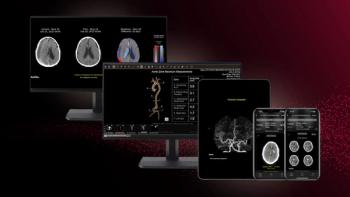
Coronary CT Angiography in ED Safe for Chest Pain Assessments
CCTA is safe and effective, and saves time when assessing patients at low- to intermediate-risk of a heart attack.
Coronary CT angiography (CCTA) in the emergency department is safe and effective, and saves time when assessing patients at low- to intermediate-risk of a heart attack, according to a study published online in the
Researchers from the Perelman School of Medicine at the University of Pennsylvania undertook the large, multicenter American College of Radiology Imaging Network (ACRIN) trial to confirm that CCTA was safe to use in patients with suspected heart attacks, allowing ED physicians the confidence to triage low- to intermediate-risk patients according to the scan’s results.
“Prior research, including work by our research team at Penn, established that CCTA can rapidly identify the extent of coronary artery disease, if present, and suggested the safety of CCTA for clinical decision making,” said Harold I. Litt, MD, PhD, chief of cardiovascular imaging in the Department of Radiology at the university.
RELATED:
The study included 908 low- to intermediate-risk patients with chest pain, who were assigned to the CCTA rapid rule-out strategy group, and 462 who were treated traditionally. Patients from both groups whose testing showed heart muscle injury were admitted to the hospital and those with negative tests were discharged. Patients who had negative tests were called 30 days after enrollment for follow up. No deaths within 30 days of discharge were reported among the 640 patients who had negative CCTA results.
“The trial results have significant potential to establish a new standard of care for low- to intermediate-risk patients, dramatically reduce health care utilization and lower medical costs,” said Judd Hollander, MD, co-principal investigator and clinical research director in the Department of Emergency Medicine at the University of Pennsylvania. “In addition to identifying the patients who could safely be discharged, the trial results showed evaluation with CCTA compared with current practice led to fewer patients having cardiac catheterizations that were found to be unnecessary and identified more patients that truly required hospital care.”
There will be more information available from this trial. “The trial’s secondary aims of comparing health care utilization of the two arms and their respective patient outcomes at one-year follow-up will also be important data to report, given the increasing scrutiny of health-care delivery costs,” said Pamela K. Woodard, MD, head of advanced imaging at Washington University School of Medicine and chair of ACRIN’s Cardiovascular Committee.
Newsletter
Stay at the forefront of radiology with the Diagnostic Imaging newsletter, delivering the latest news, clinical insights, and imaging advancements for today’s radiologists.



























